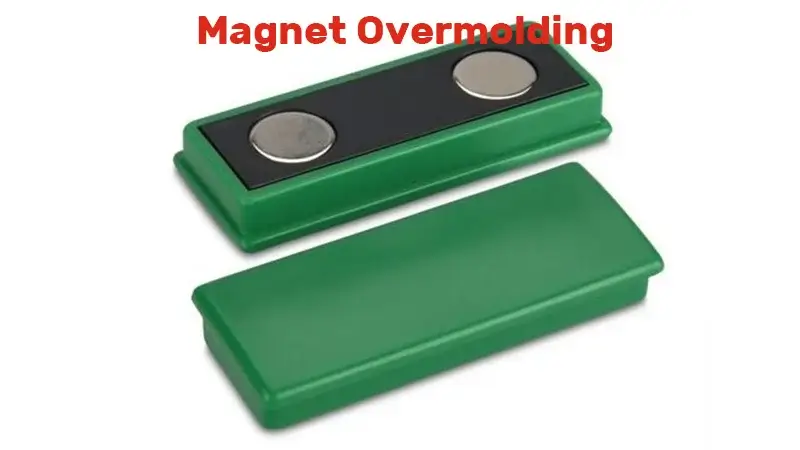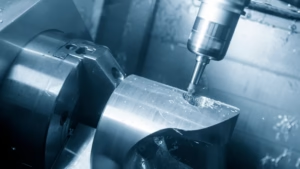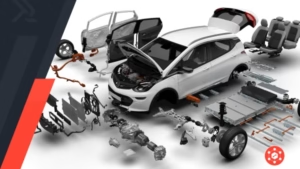Magnet overmolding refers to encasing magnets in plastic through injection molding. In this process, a magnet is placed in a mold, and plastic is injected around it, solidifying it to create a protective and robust casing. This encapsulation shields the magnet from environmental factors like moisture and corrosion and improves its performance and reliability in various applications, such as motors, electronic devices, and medical equipment. In this post, we will explore the magnet overmolding benefits, disadvantages, common materials, and applications.
Magnet Overmolding Process
Magnet overmolding is a specialized manufacturing technique that involves encapsulating magnets within a layer of plastic material. This process enhances the durability, functionality, and environmental resistance of magnets, making them suitable for a wide range of applications.
1. Magnet Preparation
Select a suitable magnet based on the application requirements, considering factors like size, shape, and magnetic properties. Clean the magnet surface thoroughly to remove any impurities, oils, or contaminants to ensure good bonding with the overmold material.
2. First Molding
Design and manufacture a plastic part that can accommodate the magnet, typically using injection molding.
3. Magnet Assembly
Insert the prepared magnet component into the first molded plastic part.
4. Second Molding (Overmolding)
Place the entire assembled component from the first molding into a second mold cavity. Inject more plastic into the second mold, which fuses with the plastic from the first molding to form a magnetically charged assembly encapsulated within the plastic. The magnet is fully encased upon cooling, creating a protective layer.
5. Magnetization (Optional)
If the magnet was not magnetized before molding, place the overmolded part into a magnetizing machine for charging and complete magnetization. Carefully control the temperature, molding cycle, and duration to avoid demagnetization due to high temperatures during injection molding.
Benefits of Magnet Overmolding
Magnet overmolding offers several significant benefits that enhance their performance, durability, and application versatility. Here are the key advantages of using overmolding in magnet applications:
1. Enhanced Durability
Overmolding provides a protective layer around magnets, shielding them from environmental factors such as moisture, dust, and corrosion. This encapsulation helps extend the service life of magnets, preventing performance degradation due to exposure to harsh conditions.
2. Improved Performance
The overmolding process can enhance the magnetic performance of the encapsulated magnets. By securely encasing the magnets, the risk of damage during handling or use is minimized, ensuring consistent functionality in applications like motors and electronic devices.
3. Reduced Assembly Complexity
Overmolding can simplify the manufacturing process by combining multiple components into a single part. This reduces the need for additional assembly steps, such as gluing or fastening, leading to lower production costs and improved efficiency.
4. Customization Options
Manufacturers can customize overmolded magnets in terms of color, material, and branding, allowing for tailored solutions that meet specific customer requirements. This level of customization enhances product appeal and can improve brand recognition.
5. Design Flexibility
Overmolding allows for a wide range of design possibilities. Manufacturers can create complex shapes and integrate magnets into various products seamlessly. This flexibility is particularly beneficial for custom applications, where specific dimensions and functionalities are required.
Considerations of Overmolding Magnets
The overmolding process for magnets involves many key factors. Through reasonable process design and strict production control, the quality and performance of overmolded magnet products can be ensured to achieve optimum states.
Material Compatibility
The materials used for the magnet and overmold must be carefully selected to ensure compatibility. Incompatible materials can lead to poor adhesion, delamination, or even damage to the magnet’s properties. The overmold material should have good chemical and thermal stability to withstand various environments without adversely affecting the magnet.
Magnet Brittleness and Handling
Magnets, especially those made from materials like neodymium, can be inherently brittle. This brittleness poses challenges during handling and processing, as the magnets may shatter or break under stress. Careful handling and fixturing techniques are necessary to prevent damage to the magnets during overmolding.
Mold Design
The mold design is critical in overmolding magnets. The mold must accommodate the specific shape and size of the magnet while ensuring complete encapsulation by the overmold material. Poor mold design can lead to incomplete coverage, weak points, or deformation of the magnet.
Magnetization
Magnets can be demagnetized due to the high temperatures encountered during injection molding. If the magnets are magnetized before molding, the temperature, molding cycle, and duration must be strictly controlled to avoid overheating and loss of magnetic properties.
How to Keep Magnetic Properties After Overmolding?
To ensure the magnetic properties remain unchanged after overmolding, there are some strategies:
Magnetization Timing
It’s best to magnetize the magnets after the overmolding process is complete. Exposing the magnets to the high temperatures of injection molding while magnetized can cause demagnetization. By magnetizing post-molding, you avoid this risk.
Temperature Control
If magnetizing before molding is necessary, strict control of the molding temperature and cycle time is critical. Exposing the magnets to excessive heat can still cause partial demagnetization. Careful thermal modeling and process optimization are required to minimize temperature exposure.
Magnet Material Selection
Using magnets made from materials with higher coercivity, like neodymium, can help maintain magnetization even with some heating. However, these materials are also more brittle, so proper fixturing is needed to prevent cracking during molding.
Adhesion
Achieving strong adhesion between the magnet and overmold material is essential to prevent exposure of the magnet or delamination of the overmolded layer. Surface preparation of the magnet and the use of compatible materials are key to ensuring good adhesion.
Conclusion
Overmolding magnets can enhance the durability, functionality, and versatility of magnets by encapsulating magnets within a protective plastic layer across various industries. Partnering with experienced manufacturers and engineers can help you navigate the complexities of the overmolding process. Zhongren is an experienced manufacturer. Our expertise can guide you in material selection, design considerations, and optimizing production methods. Welcome to contact us if any requirements.






